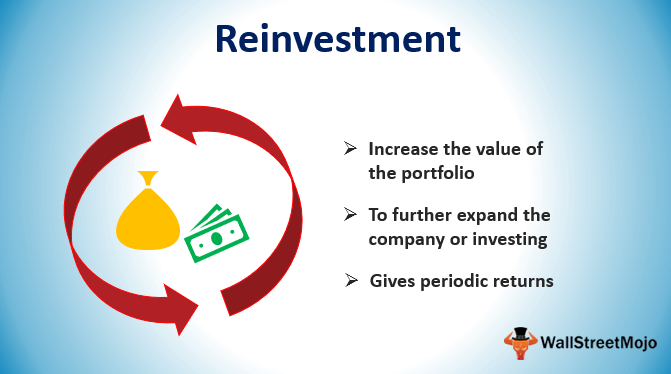41 coupon rate and market rate
Coupon rate - definition and meaning - Market Business News According to the Financial Times Lexicon, the coupon rate is: "The rate of interest paid on a bond." If the coupon rate is 5%, a $1,000 bond will pay $25 typically twice a year. Coupon rate - example. Assume that a bond has a par value of $5,000 and a coupon rate of 5%. This would make total annual coupon payments equal to $250. Coupon Rate Formula | Step by Step Calculation (with Examples) Based on the coupon rate and the prevailing market rate of interest, it can be determined whether a bond will trade at a premium, par, or discount. A bond trades at a premium Bond Trades At A Premium A premium bond refers to a financial instrument that trades in the secondary market at a price exceeding its face value. This occurs when a bond ...
Difference Between Coupon Rate and Interest Rate (With ... The main difference between Coupon Rate and Interest Rate is that the coupon rate has a fixed rate throughout the life of the bond. Meanwhile, the interest rate changes its rate according to the bond yields. The coupon rate is the annual rate of the bond that has to be paid to the holder.

Coupon rate and market rate
Difference Between Coupon Rate and Interest Rate What is the difference between Coupon Rate and Interest Rate? • Coupon Rate is the yield of a fixed income security. Interest rate is the rate charged for a borrowing. • Coupon Rate is calculated considering the face value of the investment. Interest rate is calculated considering the riskiness of the lending. Coupon Rate Definition Sep 05, 2021 · A coupon rate is the nominal yield paid by a fixed-income security. When a market ticks up and is more favorable, the coupon holder will yield less than the prevailing market conditions as the ... Coupon Bond - Guide, Examples, How Coupon Bonds Work Let's imagine that Apple Inc. issued a new four-year bond with a face value of $100 and an annual coupon rate of 5% of the bond's face value. In this case, Apple will pay $5 in annual interest to investors for every bond purchased. After four years, on the bond's maturity date, Apple will make its last coupon payment.
Coupon rate and market rate. Yield to Maturity vs. Coupon Rate: What's the Difference? May 20, 2022 · The annual coupon rate for IBM bond is thus $20 / $1,000 or 2%. Fixed-Rate and Market Value While the coupon rate of a bond is fixed, the par or face value may change. Coupon Rate - Meaning, Example, Types | Yield to Maturity ... Coupon Rate = Reference Rate + Quoted Margin The quoted margin is the additional amount that the issuer agrees to pay over the reference rate. For example, suppose the reference rate is 5-year Treasury Yield and the quoted margin is 0.5%, then the coupon rate would be - Coupon Rate = 5-Year Treasury Yield + .05% Bond Stated Interest Rate Vs. Market Rate | Pocketsense Because of the manner in which bonds are traded, the coupon rate often differs from the market interest rate. Tips A coupon rate is a fixed rate of return attached to the face value of the bond paid to the purchaser from the seller, while the market interest rate can change dramatically throughout the lifespan of the bond. Bond Basics Bond's Price, Coupon Rate, Maturity | CFA Level 1 - AnalystPrep The price of a fixed-rate bond will fluctuate whenever the market discount rate changes. This relationship could be summarized as follows: Limited Time Offer : Save 10% on all 2021 and 2022 Premium Study Packages with promo code: BLOG10 Select your Premium Package »
Finance exam 2 Flashcards | Quizlet Consider a bond with a 10% annual coupon rate, 15 years to maturity and a par value of $1,000. on slide. if coupon rate is 10 percent and bond is selling at a premium then we know the YTD will be. ... It is the difference between the coupon rate and market rate of interest. What Is a Coupon Rate? And How Does It Affects the Price of a Bond? Every year it pays the holder $50. To calculate the bond coupon rate, total annual payments need to be divided by the bond's par value. Annual payments = $ 50. Coupon rate = $500 / $1,000 = 0.05. The bond's coupon rate is 5 percent. This is the portion of bond that shall be paid every year. Yield To Maturity Vs. Coupon Rate: What's The Difference? To calculate the bond's coupon charge, divide the overall annual curiosity funds by the face worth. In this case, the overall annual curiosity cost equals $10 x 2 = $20. The annual coupon charge for IBM bond is thus $20 / $1,000 or 2%. Fixed-Rate and Market Value While the coupon charge of a bond is mounted, the par or face worth could change. Coupon Rate vs Interest Rate | Top 6 Best Differences ... Coupon Rate was introduced in the market after the concept of Interest Rates: Interest Rates was introduced in the market before the concept of Interest Rates: Coupon Rates are much more flexible: Interest Rates remains more or less static during the tenure of the loan: The coupon Rate is not generally linked to any other debt instrument
Coupon Rate Calculator | Bond Coupon Jan 12, 2022 · As this is a semi-annual coupon bond, our annual coupon rate calculator uses coupon frequency of 2. And the annual coupon payment for Bond A is: $25 * 2 = $50. Calculate the coupon rate; The last step is to calculate the coupon rate. You can find it by dividing the annual coupon payment by the face value: coupon rate = annual coupon payment ... The Difference between a Coupon and Market Rate - BrainMass Coupon rate is the interest rate to be paid on the bond at regular interval. In this case coupon rate is 8%. If the face value of the bond is $1000, the holder of the bond will receive $80 at the end of every year during the duration of the bond. In addition the bond holder will receive $1000 back on the maturity of the ... Solution Summary A Bond's Price given a Market Discount Rate - AnalystPrep If the bond has a coupon rate of 7% and the market discount is 6%, its price would be 104.21, and it would be trading at a premium. P V bond = 7 1.061 + 7 1.062 + 7 1.063 + 7 1.064 + 107 1.065 = 104.21 P V b o n d = 7 1.06 1 + 7 1.06 2 + 7 1.06 3 + 7 1.06 4 + 107 1.06 5 = 104.21 Coupon Rate - Meaning, Calculation and Importance The coupon payments are semi-annual, and the semi-annual payments are INR 50 each. To calculate the couponrate for Company A's bond, we need to know the total annual interest payments. Total Annual Interest Payments = 50 + 50 = 100. Coupon Rate = 100 / 500 * 100 = 20%.
Coupon Rate Formula | Calculator (Excel Template) - EDUCBA Coupon Rate = 20%; Now, if the market rate of interest is lower than 20% than the bond will be traded at a premium as this bond gives more value to the investors compared to other fixed income securities. However, if the market rate of interest is higher than 20%, then the bond will be traded at discount. Coupon Rate Formula – Example #2
Coupon Rate - Learn How Coupon Rate Affects Bond Pricing When calculating the yield-to-maturity, you take into account the coupon rate and any increase or decrease in the price of the bond. For example, if the face value of a bond is $1,000 and its coupon rate is 2%, the interest income equals $20. Whether the economy improves, worsens, or remains the same, the interest income does not change.
Coupon Rate Formula | Simple-Accounting.org The prevailing interest rate directly affects the coupon rate of a bond, as well as its market price.Therefore, if a $1,000 bond with a 6% coupon rate sells for $1,000, then the current yield is also 6%. However, because the market price of bonds can fluctuate, it may be possible to purchase this bond for a price that is above or below $1,000.
Concept 82: Relationships among a Bond's Price, Coupon ... Percentage price change is more when discount rate goes down than when it goes up by the same amount. Relationship with coupon rate A bond is priced at a premium above par value when the coupon rate is greater than the market discount rate. A bond is priced at a discount below par value when the coupon rate is less than the market discount rate.
What Is Coupon Rate and How Do You Calculate It? Coupon Rate vs. Yield. While coupon rate is the percentage that a bond returns based on its initial face value, yield refers to a bond's return based on its secondary market sale price. It is what the bond is worth to its current holder. When the current holder is the initial purchaser of the bond, coupon rate and yield rate are the same.
Coupon Rate vs Interest Rate | Top 8 Best Differences (with Infographics) If the investor purchases a bond of 10 years, of the face value of $1,000, and a coupon rate of 10 percent, then the bond purchaser gets $100 every year as coupon payments on the bond. If a bank has lent $ 1000 to a customer and the interest rate is 12 percent, then the borrower will have to pay charges $120 per year.
Investor BulletIn Interest rate risk — When Interest rates Go ... For example, imagine one bond that has a coupon rate of 2% while another bond has a coupon rate of 4%. All other features of the two bonds—when they mature, their level of credit risk, and so on—are the same. If market interest rates rise, then the price of the bond with the 2% coupon rate will fall more than that of the bond with the 4%
What is the difference between coupon rate and market A coupon rate is the yield paid by a fixed income security, a fixed-income security's coupon rate is simply just the annual coupon payments paid by the issuer relative to the bonds face or par value. The coupon created the yield the bond paid on its issue date.






Post a Comment for "41 coupon rate and market rate"